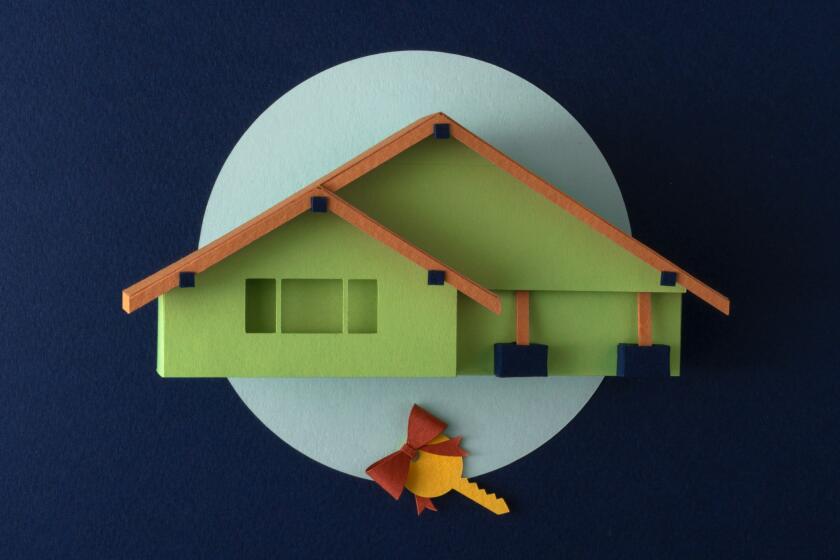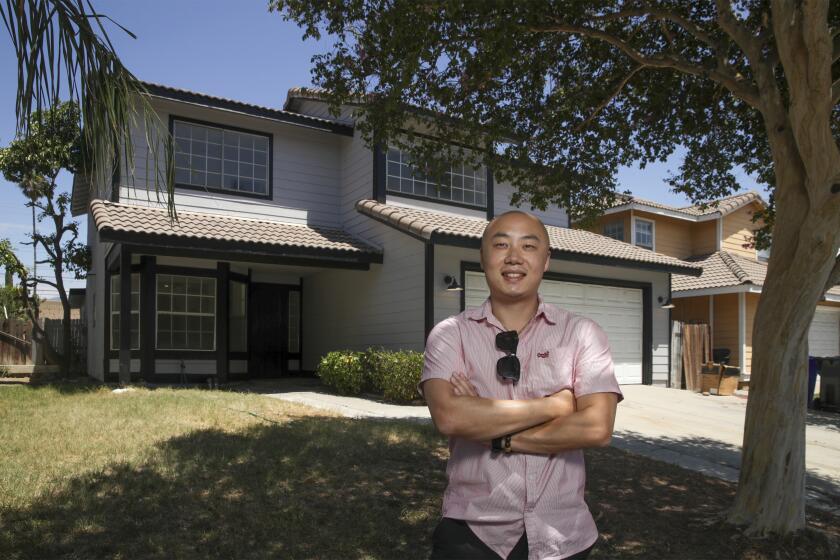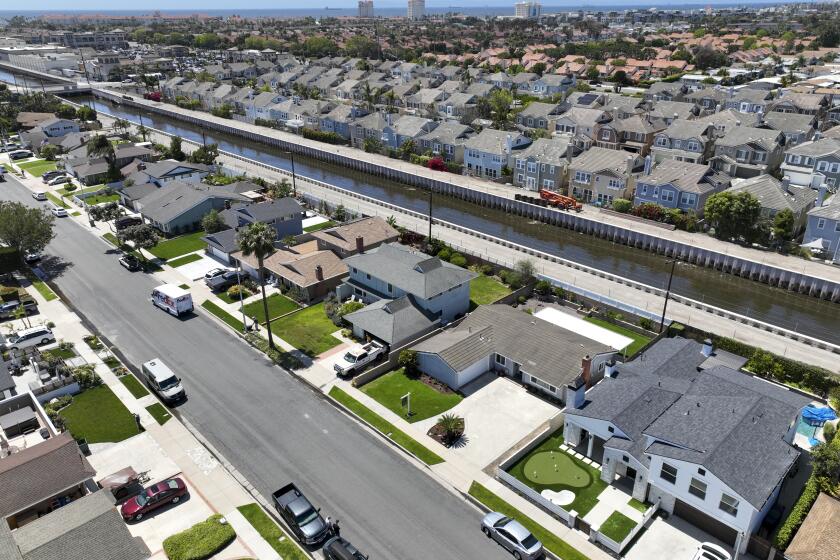Seven words no home seller wants to hear: ‘There’s a human skull beneath this house’
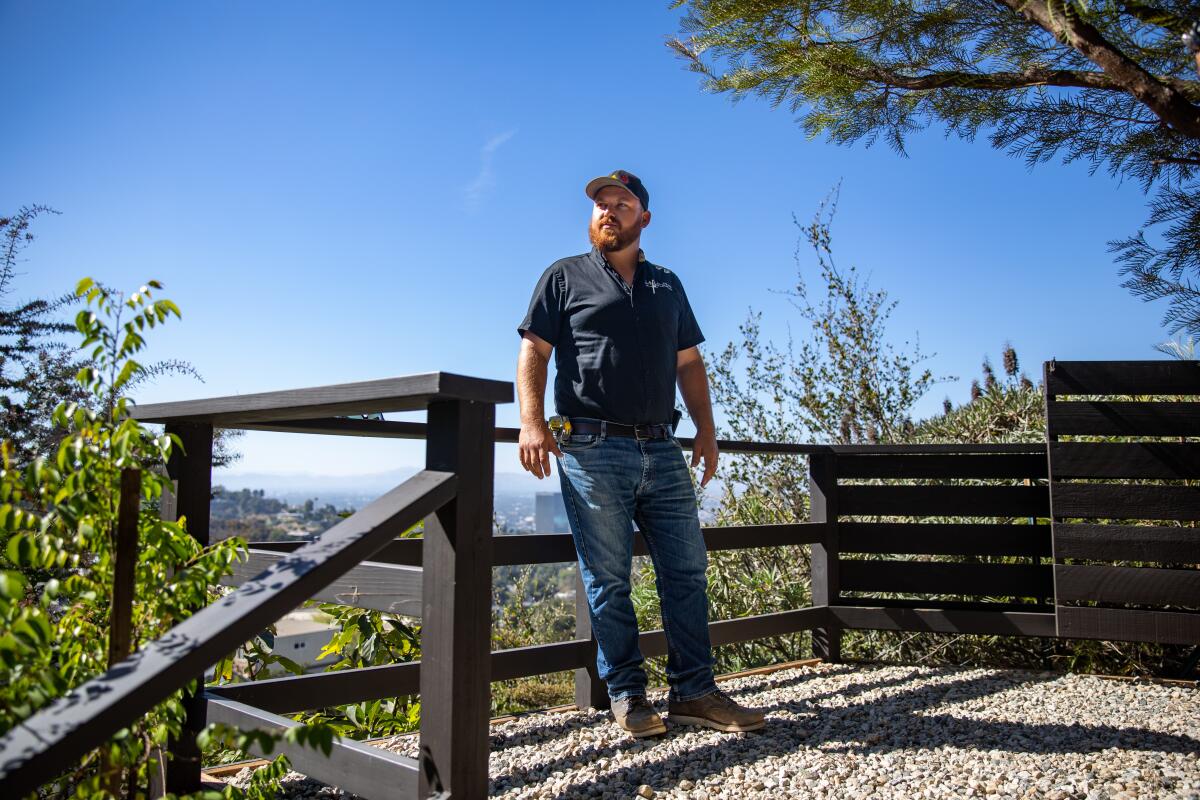
- Share via
Architects design homes. Agents sell them. Kyle Tourje plunges beneath them.
Tourje is one of nine structural assessors for Alpha Structural, a Los Angeles company that specializes in engineering and constructing foundation repairs. In other words, these people make sure your house doesn’t slide down the hill and crush the ones below it.
His parents, David and Linda, founded the company three decades ago, and Kyle has been around the business most of his life. He’s one of 141 employees at Alpha, which recently outgrew its Eagle Rock headquarters and moved to a larger facility in Sunland.
In a region as hilly and earthquake-prone as Southern California, their work is vital no matter the market. Vital and, at times, shocking.
“We’ve seen anything you can imagine under or inside a home,” Tourje said. He’s got the photos to prove it.
A no-BS guide to buying your first home in Southern California.
Each week, the assessors go out into the field and send back photos and videos of their most surprising finds: a mummified cat or maybe a mouse fight. In 2016, marketing Vice President Ben Reinhart had the idea to showcase some of the visual documentation online, creating a Reddit account for the company that uploads a weekly post titled, “Things seen this week during structural assessments!”
Run by Franchesca Hernandez, Alpha’s director of promo and design, the account racks up tens of thousands of views with each post and depicts a dark underworld brimming with life, death and foundation disasters waiting to happen. It’s part entertainment, part cautionary tale.
Photos might show a dog skeleton or a crop of ethereal fungi. One recent post featured a shrine-like setup with a baby doll and offerings including a toy gun, a Modelo beer and a pack of Newports.
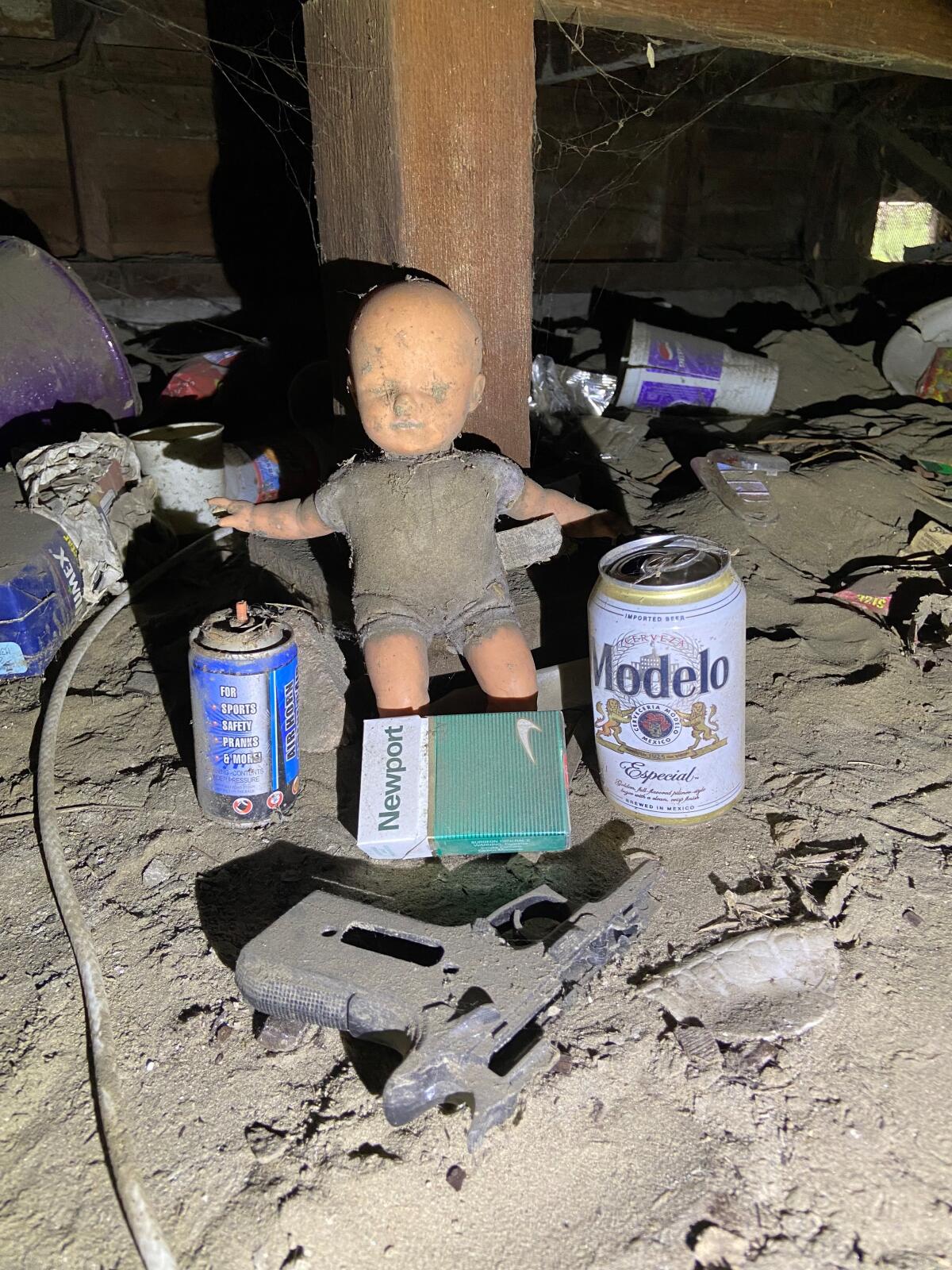
The company handles more than 4,000 assessments every year. A lot of the business comes from properties that are about to be sold and need to be inspected, but the team also addresses individual cases of landslide damage, termite infestations, retaining wall issues or foundation damage.
Many homes suffer from the long-term effects of age combined with more lax building codes of a bygone era and life near a fault line: cracked walls of concrete, crumbling mortar that turns to dust with the touch of a finger, shifting support beams centimeters away from collapsing.
Tourje has been digging around for more than a decade and has enough stories to fill out the plot of a horror movie. Here are a few.
The Southern California housing market has slowed as would-be sellers choose not to list their homes due to rising mortgage rates.
Human skull, well traveled
Tourje found himself beneath a house in Brentwood. The property was on the market, and he was checking its structural integrity before it could be sold.
That’s when he saw it: a human skull, complete with a clump of long, black hair and a few chunks of mummified flesh but minus the jawbone. Shocked, he crawled out from under the home to report his findings to the agent and seller — the son of a suddenly suspicious woman in her late 90s who owned the home.
“There’s a human skull beneath this house,” he said to the pair, whose eyes grew wide as he repeated the claim. “I need to call the police right now.”
The agent protested, worrying about the sale and hoping to figure out the matter in-house before going to the authorities. Although Tourje typically offers discretion to his clients, he’s obligated to report findings that are imminent safety issues. He considered this one of them.
“If somebody murders someone and leaves their body under a building, they’re not just going to tip off the murder,” he said. “We need to make sure this isn’t a missing person from 1985 or something.”

Police swarmed the estate along with a coroner, who had a doctorate in forensic anthropology. Surprising everyone, the coroner concluded that it wasn’t a fresh murder; in fact, it wasn’t even a murder from this millennium.
The skull was roughly 2,000 years old, the coroner said, explaining that black hair doesn’t necessarily turn white once you die.
Further conversations uncovered that the woman had gone on a family vacation to Peru in the 1970s, and an unnamed member of the family had found the skull while hiking in the mountains, smuggled it back into the country and buried it beneath the house. A photo reviewed by The Times shows the skull after it was relocated from the crawlspace far from home.
Sign up for This Evening's Big Stories
Catch up on the day with the 7 biggest L.A. Times stories in your inbox every weekday evening.
You may occasionally receive promotional content from the Los Angeles Times.
Police took the skull into custody. No arrests were made, and the sale eventually went through.
“The listing agent wasn’t a big fan of me because I brought an army of police officers to the house she was trying to sell,” he said. “But my conscience was clean.”
The Southern California housing market is cooling and forcing buyers and sellers to adjust. Here is what you should know if you are in the market.
Black widow brigade
In pursuit of good karma, Tourje generally tries not to kill the spiders he encounters on the job. For black widows — the most venomous spiders in North America — he makes an exception.
He was inspecting an abandoned home in La Cañada Flintridge where the foundation was built below grade, which made the space below it pitch black with zero natural light. To access it, he inched through an extremely tight crawl space, which happened to be the only way in or out.
Shining the flashlight around the perimeter, he immediately got goose bumps. He was surrounded by chaotically patterned, extremely strong webs that didn’t break when he grabbed them and glittered in the beam of his flashlight. An arachnid specialist of sorts after thousands of inspections, he knew they were black widow spider webs.
One sweep of the light revealed three spiders in his vicinity. He turned to the other side and found three more. Then, he looked back to where he had crawled in — and where he’d have to crawl out — and saw roughly 15. Tourje keeps a first-aid kit in his truck, but when inspecting, he’s protected only by his coveralls and a flashlight.

“Now you’re just trying to do your inspection without spending an hour killing spiders, but they could already be in your hat or in your suit,” he said.
He escaped unharmed — an escape he’s gotten used to by this point. It was one of roughly 20 times he’s inadvertently crawled into a black widow den, and he’ll fight his way out if he has to.
“You just hope there’s a stick underneath the house,” he said. “Otherwise, you’re using your flashlight.”
Southern California home prices fell slightly in July from June as the housing market slowed, but values are still about 9% higher than a year earlier.
Let sleeping dogs lie
Tight crawl spaces seem to be a theme for Tourje. One inspection brought him to Mid-City, where he was the only one on the premises to check out an abandoned house in rough shape.
The crawl space was half buried, and he had to dig his way in — a process that took about 10 minutes. Once inside, he noticed a huge chunk of the brick foundation missing, which was an obvious concern.
“As I got closer, I heard this loud grunting snort,” he said. “It sounded like it was coming from a monster.”
Through the half-missing foundation, he saw not a monster but a massive stray pit bull without a collar sleeping in the backyard. Tourje’s a fan of most dogs, but dogs aren’t always fans of him.
“We wear uniforms, so dogs liken us to the mailman. And dogs usually don’t like the mailman,” he said.
Tourje was trapped. Knowing the dog could easily access the half-buried crawlspace that took him 10 minutes to get through, he held his breath and initiated the quietest inspection of his life.
“I was tiptoeing around, barely breathing. I was like a ninja under that house,” he said.
In a significant shift in the market, fewer homes are going into escrow, inventory is rising and sellers are increasingly cutting their asking prices.
The moving bookshelf trick
Not every property Tourje inspects is so run-down. He often ends up in luxury mansions, and one abandoned house that was listed for sale on a scenic bluff above Redondo Beach held a surprising secret.
He was walking through the home checking the interior walls when he noticed a small, dark opening between two bookshelves. Shocked by the shoddy craftsmanship, he leaned in for a closer look.
“It looked like a secret door, so I started messing around with all the books,” he said.
He pulled one book out, and behind it was a pin attached to a stainless steel wire. Curious, he pulled the pin, which unlocked the door, revealing a hidden staircase that descended to a secret basement.
Tourje finds hidden rooms all the time, but usually they’re a bit more innocuous, hiding a secret speakeasy or wine cellar. This one seemed more foreboding, so he convinced the contractor who was on site to go with him so he wouldn’t disappear.
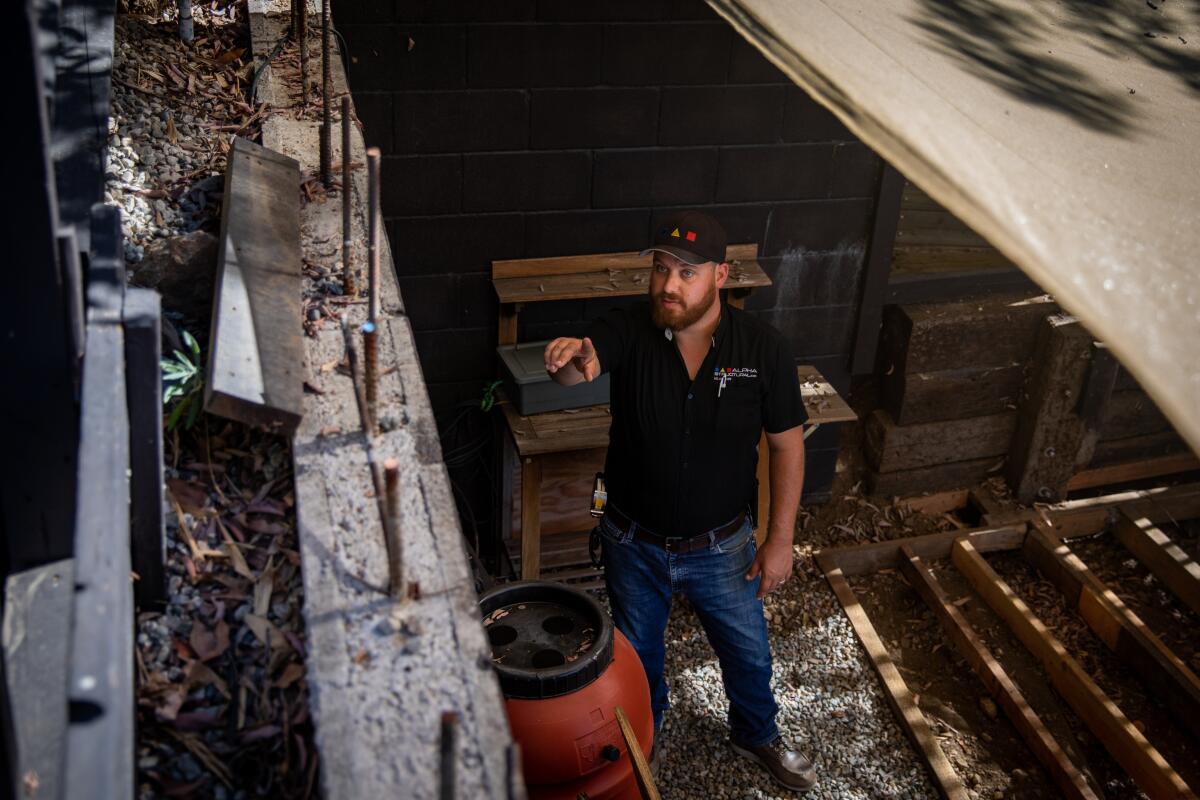
In the basement he found a scene from a spy thriller: eight massive cargo crates, nailed shut, marked by the Czech military. Surrounding them, a long, 10-foot-tall rack loaded top to bottom with computer servers.
Immediately, he imagined the place was a compound occupied by a gang or military group. The fact that it was abandoned made it all the more mysterious.
“The crates were full, and I was really tempted to open them. I assume they were loaded with grenade launchers, machine guns, who knows what else,” he said. “Maybe gold?”
Ultimately, he chose discretion over curiosity — a decision made easier by the fact that he wasn’t carrying a crowbar to break open the crates. Instead, Tourje said, he climbed back up the staircase and told the listing agent, who had no idea she was selling a house with so many secrets.
More to Read
Sign up for This Evening's Big Stories
Catch up on the day with the 7 biggest L.A. Times stories in your inbox every weekday evening.
You may occasionally receive promotional content from the Los Angeles Times.
